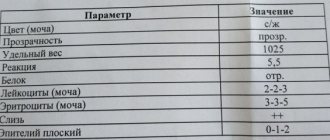In gynecology, the timing of gestation is determined using several indicators. The gynecologist uses the obstetric technique - according to the date of the last menstruation, clarifying the information with the results of an ultrasound examination. When making independent calculations, a woman can use the date of estimated conception, the day of the first movement, or a special calculator on the website.
Dates of last menstruation
The method of determining pregnancy is widely used in world practice and is one of the simplest. For calculation take:
- first day of last menstruation;
- date of counting.
The interval between the two numbers will become the conditional number of weeks of gestation. By the same indicator, the time of birth is determined - in gynecology, the technique is known as the “Nägel formula”. From the first day of the menstrual cycle, subtract 3 months and add one week. Additional methods include other calculations:
- nine calendar months are added to the first day of the last menstruation and one week is subtracted;
- add 280 days - the amount is equal to the average gestation.
This technique is simple, but it does not guarantee the correct results. In most cases, the error is 1-2 weeks from the actual position downward. A similar method is mobile obstetric calendars used in antenatal clinics.
Where to get tested for hCG in St. Petersburg
You can get tested without queues and quickly get accurate results at the Diana Clinic in St. Petersburg. When deciphering, specialists take into account all factors that can affect the level of beta-hCG, which eliminates errors. Here you can consult with experienced gynecologists who will explain what to do in a given situation.
If you find an error, please select a piece of text and press Ctrl+Enter
By time of conception
To perform the second method of calculating pregnancy, you need to know the exact date of ovulation. Pregnancy occurs in the middle of the menstrual cycle, during the release of a mature egg from the ovaries. The accuracy of the method depends on the regularity of the monthly cycle; if you have irregular periods, it is better not to use it. The problem is the difficulty of calculating the date of ovulation.
The release of the egg is determined by gynecological tests sold in pharmacies, ultrasound results or basal temperature. The last option is used at home. In individual women, the presence of ovulation is determined by their general health. Changes cause:
- mild state of nausea;
- weakness;
- discomfort in the lower abdomen;
- increased libido;
- strong vaginal discharge.
If the patient cannot determine the exact time of release of the egg, then the pregnancy period cannot be calculated by week.
The course of pregnancy by week
Mother's well-being at twenty-fifth week
The expectant mother's belly is growing and her weight is steadily gaining (approximately 350 g per week). Now it is important to control your salt intake in order to avoid possible swelling. They can be not only unpleasant, but also quite dangerous. Mom feels great, but it is very important not to overload herself and take care of herself. A woman constantly needs positive emotions, good sleep and rest. This week, the fundus of the uterus rises above the pubis by 25 cm. If this distance is less, the doctor may note a delay in the development of the baby, so control is important. An enlarged uterus can limit physical exercise and the duration of walks, so it is very important for the mother to choose comfortable shoes and clothes; a bandage will help make the condition more comfortable. This week it is necessary to monitor the level of hemoglobin in the blood. Evidence of its decrease may be rapid fatigue, shortness of breath, and rapid heartbeat. This is a period of very active iron consumption, which is so important for the baby’s future. In this case, anemia may develop. It is not a disease, but is physiological in nature (occurs exclusively during pregnancy). Prescribing special iron supplements can always correct the situation and bring hemoglobin levels back to normal.
What happens to the baby at the twenty-sixth week of pregnancy
The baby continues to develop and grow, his weight has already reached 900 g, and his height is 34 cm. During this period, the baby will be able to survive if he decides to be born prematurely. In the second trimester, all the organs of the little man are practically formed. The intensity of the little one's movements and the force of his kicks are becoming stronger, and the mother may feel uncomfortable and painful. The baby has a lot of space, which allows him to tumble and move actively. Although it is already fully formed, the body is still small and thin. Basically, a baby gains weight by accumulating fat and due to muscle growth. The baby is able to distinguish the taste of amniotic fluid, which changes in accordance with what the mother ate. Lung tissue is now being actively formed; it plays an important role in the respiratory system of a small organism. Within a week, the baby’s reproductive system effectively develops; in boys, the testicles begin to move into the scrotum, and in girls, the genitals and vagina are formed. The baby can already clearly distinguish the voices of his relatives, recognizes his mother’s voice, familiar sounds. Therefore, now you can sing lullabies to him. The baby hears the mother's heartbeat and after birth will be able to fall asleep better if he is placed to the breast. The baby can already distinguish between light and dark, and his eyeballs continue to form.
What happens to the mother at the twenty-sixth week of pregnancy
The already significantly enlarged tummy begins to restrict breathing (you want to take a deep breath), shortness of breath may appear. This week, the mother's total weight may increase by approximately nine kilograms. It is more difficult for the expectant mother to walk; a bandage, comfortable clothes and shoes will help alleviate the condition. Now it is important for a woman to spend a lot of time outdoors, increasing the number or time of walks. The mother's visual acuity may also decrease, but this is a temporary phenomenon. The fundus of the uterus rises to a distance of 26 cm from the pubis. The uterus grows approximately 1 cm per week, putting pressure on other organs. This week, mom can attend special sports sections and provide herself with moderate physical activity. It is not recommended to stay in a sitting or lying position for a long time.
Women are now concerned about the appearance of age spots on the skin. There are no effective remedies against this; mom needs to be patient and just wait. After childbirth, the skin condition returns to normal. Training contractions may appear this week; they are not dangerous, but if they occur, you should notify your doctor. It is very important for an expectant mother to protect herself from stress; the support and care of loved ones can help with this. For a woman, home-cooked food is preferable; it is important to split portions and eat food often and in small quantities. This will help reduce the discomfort from heartburn and nausea that are possible this week. The process is completely natural; the enlarged uterus puts pressure on the organs of the digestive system and displaces them.
How the baby develops at the twenty-seventh week of pregnancy
Active movements and growth are characteristic of the baby this week. He still has enough space in his mother’s tummy and nothing hinders his movements. The baby actively moves its arms and legs and can still roll over if it is positioned with its head up. The strength of his thrusts increases, and this is due to constant training and an increase in muscle mass. The baby is actively preparing for birth, training its arms and legs. From this period, the endocrine system and its important part, the pituitary gland, develop, which plays a huge role in the growth of the baby. The thyroid gland is activated, producing important hormones that regulate metabolism in the body. The production of hormones this week allows the baby to provide for its own needs, because until this moment the mother’s hormones played the main role. This week is the main one in the formation of the baby’s individual metabolic system and his reaction to many events and processes in life. The baby’s weight also increases, reaching 1000 g, and the length of the baby’s body is 34 cm. The baby’s body is covered with vellus hairs, and there are small soft marigolds on the fingers. The lungs continue to develop and train for the birth of a baby. The baby receives oxygen through the placenta. The baby begins to distinguish colors and can turn its head towards the light source, can feel pain and clench its tiny fists.
What does the expectant mother feel at the twenty-seventh week of pregnancy?
Things are getting a little more difficult for mom this week. The baby's activity may cause pain. A woman’s mood often changes, and during this period the support and care of loved ones is especially important. Mom may have experiences and fears that should not be kept silent; it is better to share them with her husband or friends. On the physiological side, swelling, dizziness and increased weather sensitivity may occur. Stretching skin on the tummy often begins to itch, and a special cream can help in this case. During this period, a woman’s uterus is located at a distance of approximately 28 cm from the pubis. The mother continues to gain weight due to an increase in the amount of amniotic fluid, the weight of the placenta and the baby. Under the weight of the belly, a woman’s posture may change, lower back pain and excessive sweating may appear. It is better for a woman to rest lying on her side; sleeping on her back should be minimized. Swimming lessons in the pool would be ideal for mom and baby. Due to the fact that the baby’s endocrine system begins to work independently, changing hormonal levels, the mother’s well-being improves. This week, cramps may appear, you should not be afraid of this, the phenomena will pass after childbirth. Changes in body position, a special cream, and light massage of this area will help minimize discomfort.
Baby at twenty-eight weeks
This week the baby already reaches 1,200 g, and his height is 35 cm. The baby’s body takes on a more rounded shape, the folds are smoothed out, and he becomes more and more like a newborn. Tiny tufts of hair gradually begin to fall out, remaining in the area of the shoulders, back and lower back. The hairs on the head, eyebrows and eyelashes gradually darken, and you can already guess what color they will be after birth. The baby can distinguish sounds and voices better and better; at this time, you can play lullabies so that he begins to get used to them. The baby is already beginning to blink his eyes and open his eyelids a little. The weight of the brain increases, and grooves appear on its surface. More and more, the baby begins to distinguish the taste of foods. Mom’s preferences in tastes and smells will be passed on to the baby, since from this period he begins to get used to what mom loves and eats. The baby's skeleton has almost formed, but the bones remain soft, and they will continue to harden even after the baby is born.
This week is also important for the formation of the baby’s psyche and character. It may happen that the baby will be more active at night than during the day. Don't worry, during the day when mom walks, the baby rocks in her tummy and falls asleep. Therefore, its activity at night is quite understandable.
Changes in mom at twenty-eight weeks
Mom's weight gain this week reaches approximately 10 kg, the uterus rises 28 cm from the pubis. Now it is very important to take care of yourself, avoid falls and not overwork. Mom feels the baby’s movements very well, because he has grown significantly and began to take up more space in the woman’s tummy. The movements have become much stronger, and the tremors are now more painful. The baby spends more time awake, and the period of his activity has also increased significantly. The condition of the mother now significantly affects the condition of the baby. If mom is nervous, the baby will also be restless. Also, a lot depends on the mother’s diet: eating sweets will give the baby energy and make him active. The woman also experiences increased pain in the lower back, back and legs, she is more likely to get tired and suffer from shortness of breath. It is important to choose a comfortable position for sleep, and this is becoming increasingly difficult to do. Mom is becoming less and less agile, her thought processes are slowing down. This week there is a threat of miscarriage; a woman’s blood pressure may also increase and, as a result, her health may worsen. It is important for mom to eat a variety of foods: it should be divided into small portions that should be consumed frequently. Since the baby is actively growing, he needs more and more space; if the mother’s stomach and intestines are full, the baby will not like it. A woman experiences training contractions, her stomach may pull, and pain in the lower back intensifies. In this case, it is also recommended to wear a bandage and rest more.
Fetal movement and online calculator
The first signs of the baby's viability appear at 18-20 weeks. Earlier, movement is observed in women with children, later - during the first pregnancy. When the first tremors appear, it is enough to count twenty weeks and get the exact time of birth. For multiparous women, 22 weeks is considered.
The only problem with the method is that the movements vary in strength. Not all pregnant women immediately notice the initial tremors, and for some they occur earlier. The average statistical error is 7 days.
There is a page on the Internet with a special online calculator designed to calculate the timing of pregnancy. It is based on the method of calculating the time of the last menstruation. To get the right results, a woman should know:
- date of menstruation;
- average duration of the menstrual cycle;
- duration of the luteal phase.
The system automatically provides a response when you enter the specified information. The pregnancy calculator helps you get answers to many questions:
- find out the approximate time of conception;
- calculate the time of the expected birth of the baby;
- clarify the gestation period and how many days are left before the birth;
- determine changes in the body that are relevant specifically for this date;
- study the size of the fetus and the skills it has acquired.
The free service, available online, helps reduce the risk of arithmetic errors and saves time. The program has a friendly interface and the application is easy to use.
None of the above methods can claim to be an ideal way to calculate the pregnancy calendar. If there is information about the last monthly cycle and ovulation, a woman can quite accurately find out the date of her future birth. If you have any doubts, you can get answers to your questions from the obstetrician-gynecologist leading the pregnancy.
Interactive pregnancy calendar
But in addition, modern expectant mothers resort to the Internet and choose an interactive pregnancy calendar for observations. It is convenient, easy to use, accurate, practical, informative and completely free!
You can resort to its help when you need to quickly determine the date of birth or accurately determine the current stage of pregnancy (using a special calculator for this), divide your pregnancy into trimesters, months or weeks.
Online pregnancy calendar is becoming increasingly popular. Women want to know more about this special period: what are the first signs of pregnancy, how to avoid miscarriage, what to do with increased uterine tone, how to recognize the first warning signs of labor, how to determine the sex of the child. The calendar will contain articles, tips, explanations, as well as a calculator for determining the duration of pregnancy and the expected date of birth.
You can conduct personal monitoring of your own pregnancy, your condition and that of your child, and carry out calculations that interest you.
Online pregnancy calendar - at your service!
Keep your finger on the pulse of the most important events in your life! [collapse]
Why is it necessary to know the gestational age during IVF?
Determining the exact timing of pregnancy plays a critical role in maintaining the health of mother and baby and, ultimately, in a successful delivery. It is necessary for the following purposes:
- Determining the date of delivery . Childbirth is a complex process that poses a certain threat to the health and life of the woman herself and her child. Therefore, preparation for them must begin in advance, and for this you need to know the estimated start date. This is especially true for patients who have undergone IVF, since in their case pregnancy is more difficult, because it is, in fact, the result of medical treatment for infertility. Accordingly, in the case of in vitro fertilization, the risk of miscarriage, frozen embryo development and other complications increases.
- Carrying out an abortion procedure. Unfortunately, not every pregnancy ends successfully. During the process of bearing a child, especially after IVF, a woman may experience serious complications that threaten her health and life. Often, to preserve them, doctors resort to artificial termination of pregnancy as the only possible option. However, abortion (especially surgical) in itself is a serious stress for the mother's body and can only be carried out in the early stages of pregnancy. If the exact timing of gestation is unknown, the doctor is not able to accurately determine at what stage of development the fetus is, and may carry out the procedure late, which is fraught for the woman, at best, with the final loss of the opportunity to have children in the future, and at worst, with her death.
- For pregnancy management. Women who have undergone in vitro fertilization require more careful medical supervision. Pregnancies resulting from IVF are at increased risk of complications. Accordingly, the doctor must know its exact timing in order to choose the appropriate medical care strategy, including the prescription of certain medications and their dosages, diagnostic and therapeutic measures.
Calculating the period of conception after IVF is also necessary to monitor the development of the fetus, identify possible congenital anomalies, correct the mother’s lifestyle, her diet and other goals. Timely and accurately calculated medical care is the main factor ensuring the normal course of pregnancy after IVF and successful delivery.
Take the first step
make an appointment with a doctor!






